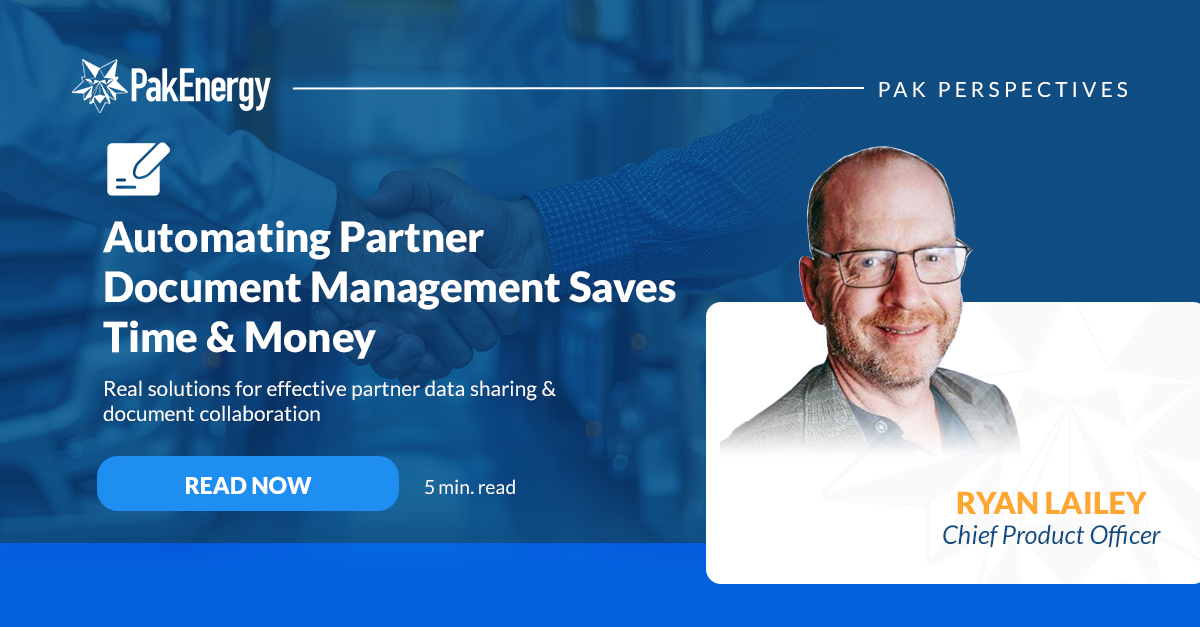
The oil & gas industry is built on partnership. Through joint ventures, operators share the costs, risks, and rewards of drilling a well. Ten years ago, this meant drilling a single well. However, today's trend of completing an entire drilling spacing unit can lead to multi-well pads with a price tag in the tens of millions. Sharing costs has never been more important, leading to a surge in the number of working interest partners for operators.

There are two sides to the owner relations coin. On one side are the mineral and royalty owners who simply receive mailbox money and call your owner relations hotline for support, such as requesting an ownership or address change. On the other side are working interest owners who receive production payments instead of royalties. While both types of owners receive revenue distributions and annual 1099s, partners also share in drilling and operating expenses. Adding complexity, joint operating agreements obligate the operating partner to share a wide variety of well data and documents upon request.
In this blog post, I'd like to delve deeper into the challenges and solutions surrounding partner data sharing and document collaboration. Oil and gas document management is a universal and core competency, and solving partner document collaboration can also be extended to other areas of the business, including land management and vendor relations.
Oil & Gas Document Management Dilemma
While most royalty owners are happy to continue receiving printed checks and revenue statements in the mail, partners seek to run the back office as efficiently as you do. Whether they are an operator or a professionally managed mineral fund, partners suffer from the same flood of monthly paper statements as operators, including revenue statements, joint interest billings (JIB), authorization for expenditure (AFE), and 1099s. Like you, partners would rather receive digital documents and ditch the paper.
Because of the language of most joint operating agreements (JOAs), the default mode of honoring requests for well documents is reactive. Partners bypass the hotline dedicated to mineral owners and make direct requests to your team for the information they need, from operating statements and gas balances to drilling reports and missing 1099 forms. With hundreds and even thousands of partners to manage, the result is a constant disruption that pulls staff away from their primary jobs.
When it comes to paper-based approval and signature processes for AFEs, JIBs, and division orders, operators lack visibility into document status, whether or not the document has been received, and whether it has been approved or signed.
Transforming Paper into Digital Assets

Making oil & gas document management a core competency starts by digitizing inbound documents from your partners. The PakEnergy document imaging module enables rapid and efficient digitization, coding, and routing of 1099s, JIBs, and revenue statements. It intelligently extracts data from scanned files and PDFs received via e-mail and loads digital documents into a centralized document repository. Combined with an oil & gas industry specific document taxonomy, information received from partners in the mail is kept organized for rapid access by your team. Plus, full-text search makes finding the right docs as easy as using Google.

PakEnergy's imaging and document management solution also automates internal workflows. For example, JIBs, AFEs, and division order approvals can be routed according to your organization’s unique eSignature processes, accelerating business workflows with a complete audit trail. Consider the time and money your team also spends on outbound partner mail. PakEnergy's external facing document management platform, Pak Exchange, eliminates the costs associated with printing, stuffing envelopes, and postage by sending a digital copy to partners instead.
Self-Service Partner Document Management
The sheer number of partnerships across the industry is impeding efficient oil and gas document management. Thousands of operators attempt to exchange documents among a complex and interconnected web of working interest partners. Digital solutions, when used, create an information sprawl of multiple file locations and multiple logins across services. Pak Exchange solves the industry’s oil & gas document-sharing challenges, providing each operator/partner with a single login to all of their well and accounting documents. Pak Exchange empowers your team to create a centralized partner portal where participation is completely free for working interest owners. As easy as connecting on LinkedIn, Pak Exchange lets you easily invite partners to the cloud-based platform to access documents instantly instead of requesting and waiting per JOA.
As operators increasingly use Pak Exchange to provide self-service access to partner documents, the network effect is accelerating adoption across the industry. It places more of your working interest owners on the list of participating companies while making it easier for your team to access non-operated well data and documents from one place.
Pak Exchange also makes it easy to attach a workflow to any document, simplifying and accelerating partner eSignatures (e.g., division orders). Importantly, your team can see document status at a glance and know whether or not Owner Statements have been received, Division Orders have been signed and returned, or an Owner has Changed Banks or their address. Automating document management further for users of Pak Accounting, Owner Statements, Revenue Statements, 1099s, and Division Orders can be instantly sent to partners simply by clicking the Update to Exchange button.
Expanding the Value of Pak Exchange

Of course, operators have many oil and gas document management challenges beyond partners, but owner relations management is perhaps the most powerful use case. Pak Exchange is the only energy-specific solution in the market spanning oil and gas document types. With many accounts payable (AP) automation solutions to choose from, paying vendors is table stakes in the document management game, but The Pak does AP better than anyone. Pak Exchange easily handles simple or complex AP workflows, transforming paper invoices into accurately coded digital assets using PakEnergy's imaging and data extraction module. Rapidly route invoices for eSignature and provide vendors with clarity into status with the ability to reject and resubmit invoices.
Further differentiating Pak Exchange is the ability to manage AP automation approvals and partner document management from a single solution built for oil & gas. Use PakEnergy's imaging and centralized document management to replace all of your internal paper workflows with digital, well-organized, and searchable digital docs, including leases and land files. And collaborate across external stakeholders, investors, and your supply chain with Pak Exchange. See for yourself how Pak Exchange’s easy-to-use system can reduce the chaos of document management and help save you substantial time and money. Schedule a demo today!

Ryan Lailey is the Chief Product Officer of PakEnergy, responsible for product leadership, continued innovation, and ongoing strategy. With over 20 years of finance and technology experience, Ryan’s career has touched every aspect of corporate operations giving him a unique perspective on the importance of digital solutions to optimize performance and increase valuation. Ryan joined PakEnergy in 2019 during the acquisition of DocVue, where he served as Chief Technology Officer and Chief Operating Officer. Before DocVue, Ryan was a founding member of Cortex Business Solutions and served in leadership roles in multiple areas of the organization including business development, marketing, investor relations, and corporate strategy. Previously, Ryan served as a senior financial executive at ScotiaMcLeod, a premier investment advisory firm in Canada.

